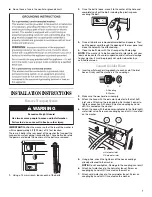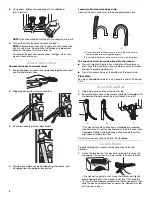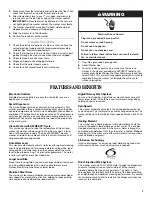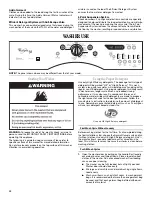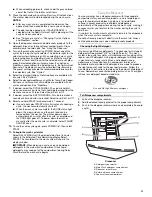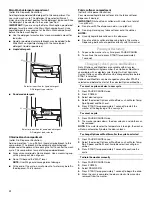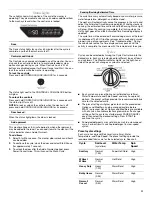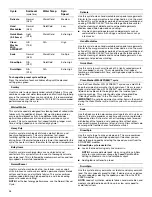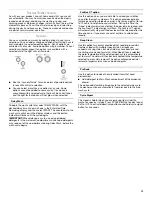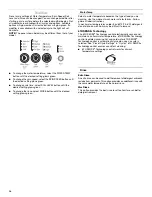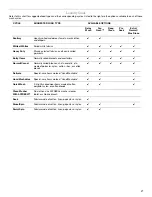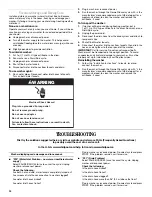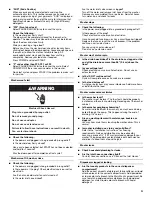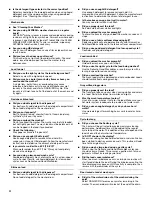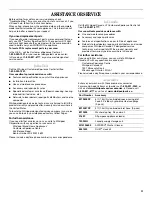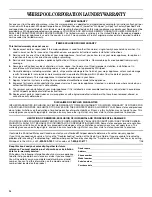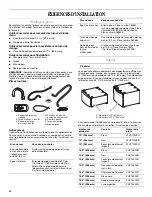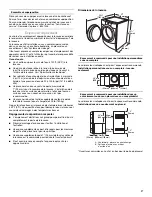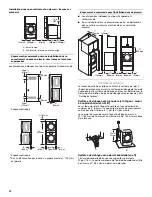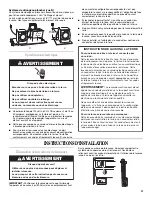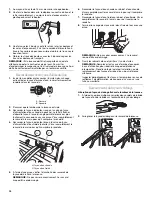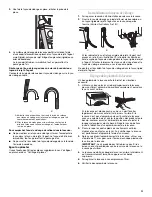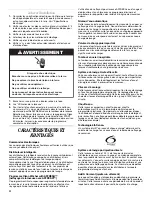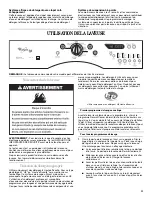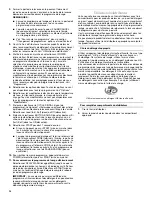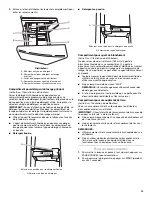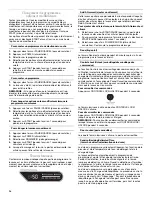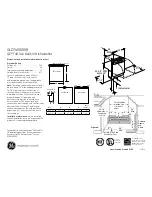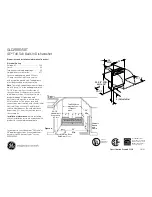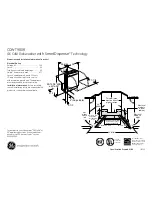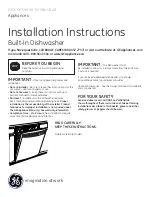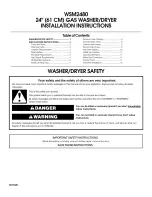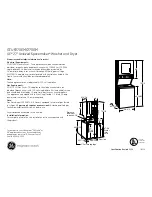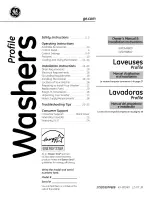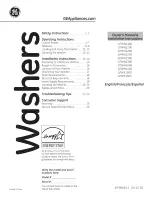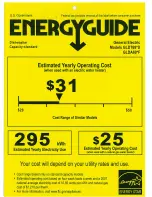
21
■
“SUD” (Su
d
s Routine)
When excessive suds are detected, a suds routine
automatically starts. This routine removes extra suds and
assures proper rinsing of your garments. “SUD” is displayed
during rinsing and at the end of the cycle to inform you that
Suds Routine was activated. Use only HE (High Efficiency)
detergents.
■
“F22” (Front
d
oor lock)
Select PAUSE/CANCEL twice to cancel the cycle.
Check the following:
Is the washer door firmly shut?
The door must be completely closed for the washer to
operate. The door may look closed, but may not be latched.
Open the door and close firmly.
Were you washing a large load?
Before you close the washer door, check for laundry items
sticking out beyond the door opening. Leave enough space in
the washer to allow the clothes to tumble freely. An
overloaded basket may keep the door from shutting
completely. Reduce your load size if needed.
Press POWER and select START.
■
“F” co
d
es other than F20, F21 or F22
Select PAUSE/CANCEL twice to cancel the cycle. Select
DRAIN/SPIN if there is excessive water in the washer.
Re-select cycle and press START. If the problem remains, call
for service.
Washer won’t start
Electrical
S
hock Hazard
Plu
g
into a
g
rounded
3
pron
g
outlet.
Do not remove
g
round pron
g
.
Do not use an adapter.
Do not use an extension cord.
Failure to follow these instructions can result in death,
fire, or electrical shock.
WARNING
■
Check the following:
Is the power cord plugged into a grounded 3 prong outlet?
Is the washer door firmly closed?
Has a cycle been selected, but START has not been selected
and held for 1 second?
Was the door open after completion of last cycle?
Washer won’t fill, wash, or rinse
■
Check the following:
Is the power cord plugged into a grounded 3 prong outlet?
Is there power at the plug? Check electrical source or call an
electrician.
Are the hot and cold water faucets turned on?
Is the water inlet hose kinked?
Are the water inlet valve screens clogged?
Turn off the water and remove inlet hoses from the washer.
Remove any accumulated film or particles. Reinstall hoses,
turn water on, and check for leaks.
Washer stops
■
Check the following:
Is the power cord plugged into a grounded 3 prong outlet?
Is there power at the plug?
Check electrical source or call an electrician.
Has a household fuse blown, or has a circuit breaker tripped?
Replace the fuse or reset the circuit breaker. If the problem
continues, call an electrician.
Are you using an extension cord?
Do not use an extension cord.
Washer won’t
d
rain or spin
■
Is the
d
rain hose kinke
d
? Is the
d
rain hose clogge
d
, or the
en
d
of the
d
rain hose more than 96" (2.4 m) a
b
ove the
floor?
■
Is your voltage low?
Check electrical source or call electrician. Do not use an
extension cord.
■
Is the “SUD” routine active?
Cycle will complete once extra suds are removed.
■
Is the loa
d
b
alance
d
?
A single or bulky item may cause imbalance. Add more items
or redistribute the load.
Washer makes noise or vi
b
rates
■
Is the washer level?
The washer must be level. The four feet should be properly
installed, and the nuts should be tightened against the washer
cabinet.
■
Is the washer gurgling or humming?
As water is drained from the washer, you may hear air being
pulled through the pump. This happens during the end of
draining. It is normal.
■
Are you washing items with metal snaps,
b
uckles, or
zippers?
You may hear metal items touching the washer drum. This is
normal.
■
Is washer installe
d
on a stur
d
y an
d
soli
d
floor?
Refer to the “Installation Instructions” for flooring
requirements. Noise and vibration may be reduced by
securing a piece of ¾" (19.1 mm) plywood underneath your
washer. The plywood may extend underneath both washer
and dryer to keep them at equal heights.
Washer leaks
■
Check househol
d
plum
b
ing for leaks.
■
Are the inlet hose connections tight?
For inlet hose connections, see “Connect the Inlet Hoses.”
Dispensers clogge
d
or leaking
■
Are the laun
d
ry pro
d
ucts in the correct
d
ispenser
compartment?
Add the correct amounts of detergent, fabric softener, or liquid
chlorine bleach to the correct compartments. Add powdered
or liquid color-safe bleach to the Main Wash compartment. Be
sure to match powdered color-safe bleach with powdered
detergent or match liquid color-safe bleach with liquid
detergent.

